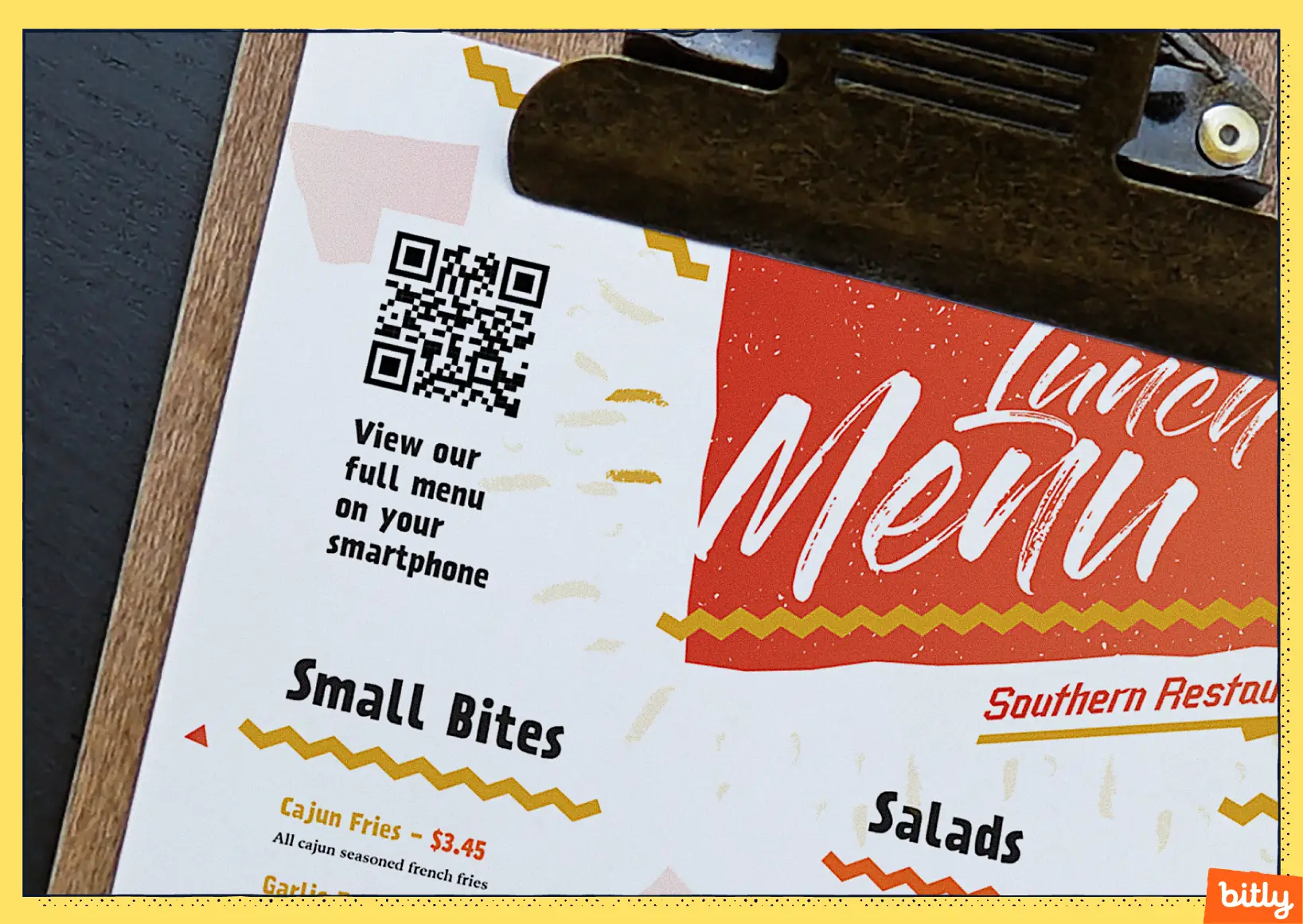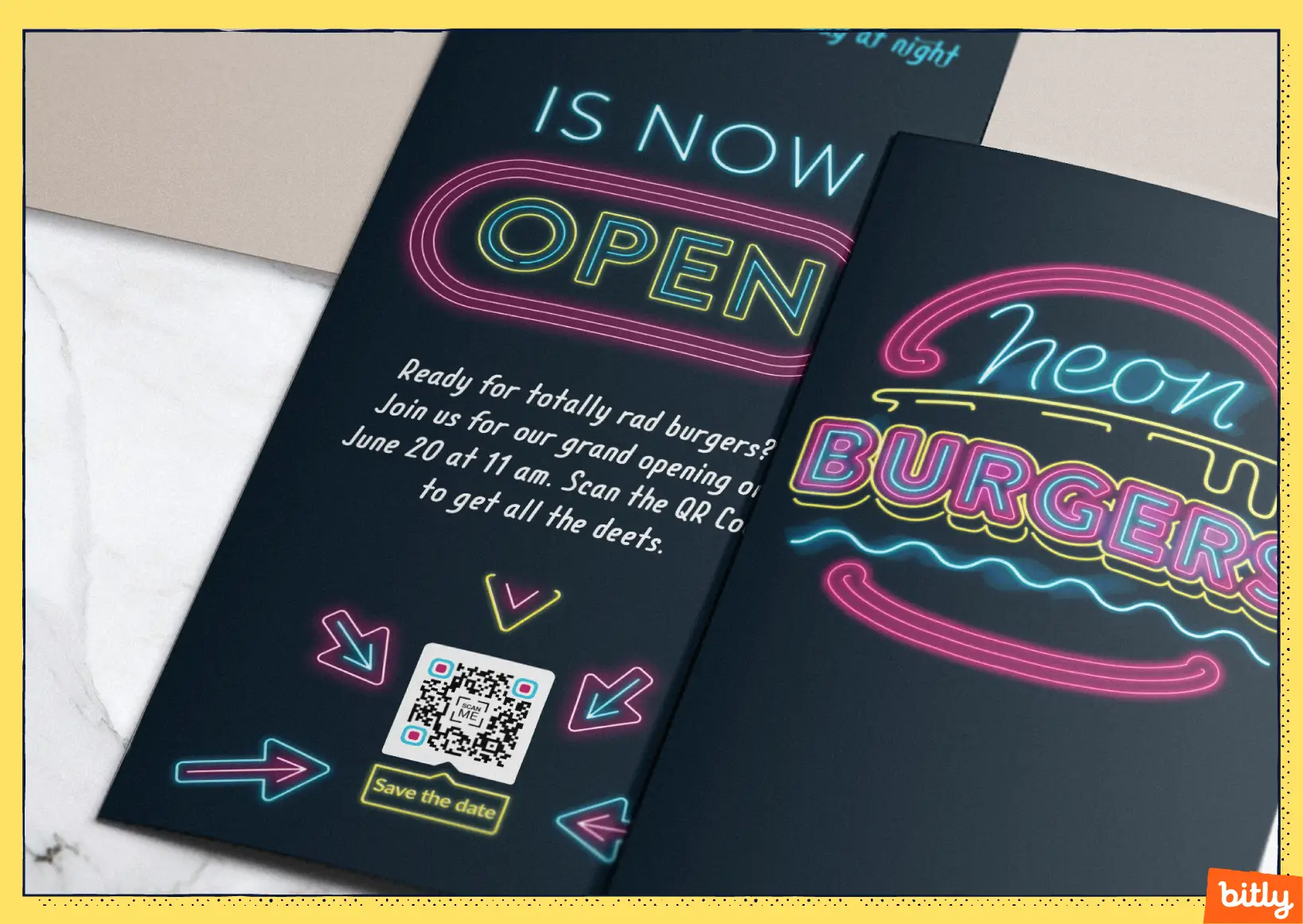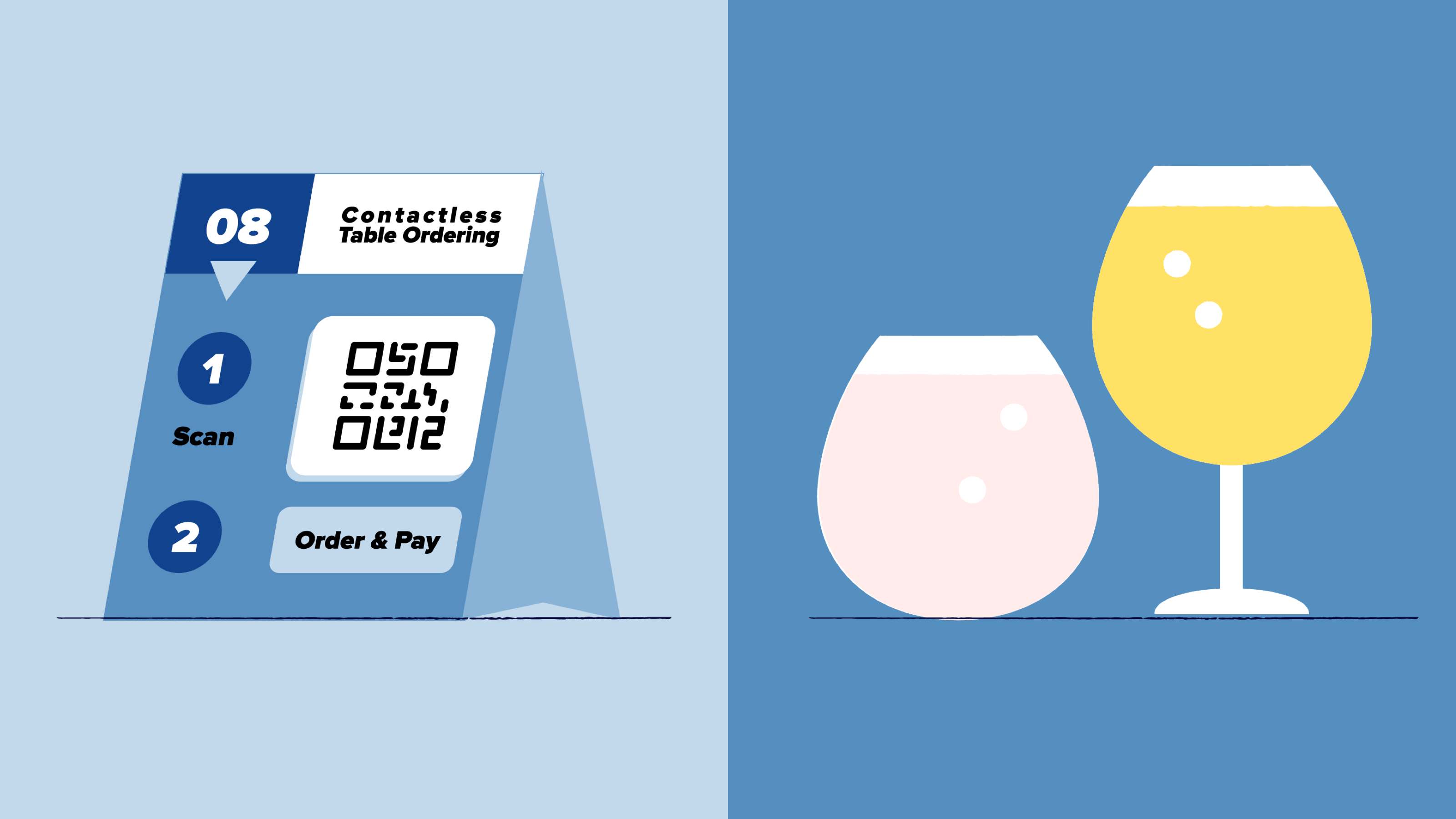A truly great meal is an experience that diners remember for years to come. But world-class restaurants know better than anyone that creating an unforgettable dining experience is about much more than the food you place at the table. It’s about speed, accuracy, and ambiance—you need to anticipate needs and make guests feel welcomed and seen during every part of their meal.
Both national brands and local restaurants alike are embracing the power of technology to create more efficient, convenient, and personalized dining experiences for every customer. Let’s explore the tools that are transforming the modern restaurant business and how you can put them to work to make every meal amazing.
Customer experience: The recipe for success
In 2022, the fan-favorite (and now Emmy-winning) TV series The Bear peeled back the curtain on what goes on behind closed kitchen doors—the highs, lows, successes, and stresses.
One episode reveals what it takes to delight customers at Ever, a fictional restaurant with three Michelin stars. From hand-peeling mushrooms to overhearing (and granting) a customer’s wish to try Chicago-style pizza before leaving the city, the staff goes above and beyond to care for guests and anticipate their needs.
All of these efforts take place behind the scenes or in the kitchen. But to give guests the best possible dining experience, you also need to level up the front-of-house interactions diners have with your staff and your brand before, during, and after their meals. These touchpoints are your opportunity to build relationships with diners, deepen loyalty, and become the first restaurant that comes to mind when their friend or partner says, “Where should we go for dinner?”
The stress and fast pace of the restaurant business make this easier said than done, of course, but customer-facing technology is your secret weapon to drive efficiency for your staff and connect with guests. Tools like QR Codes, short links, and link-in-bios give your guests the resources they need, so they go home fully satisfied—and ready to visit again.

Why technology is a win for restaurants
You’re probably already experimenting with or using a whole suite of newer tech tools to improve efficiency in the kitchen or streamline the point of sale. But here’s why tech like QR Codes, short links, and link-in-bios are especially well-suited to the restaurant world and how they elevate the dining experience.
Real-time guest interactions
You never know when your audience’s hunger will show up—or when you’ll have the chance to inspire a visit and drive loyalty. That’s why you need a whole suite of tools that can reach audiences in real time:
- Offer mouth-watering details straight from social with your link-in-bio.
- Make clicks in your ads and emails trackable and trustworthy with short links.
- From billboards to the moment someone sits down at their table, use QR Codes to engage in all-new ways.
With these tools on your team, you can help your guests stay hungry for all you have to offer by meeting them across channels—and keep them excited to see what you’re cooking up next.
Flexibility
Not only does tech let you reach your audience wherever they are, but these adaptable tools ensure you’re sharing only your latest and greatest offerings with them. From your marketing efforts to in-house digital touchpoints, you can change dynamic QR Code links or update short link destination pages to share seasonal menu items or limited-time discounts. Keep interactions fresh and exciting, so guests know there’s always something new to experience with you—and can’t wait to come back.
Efficiency
Technology plays an important role in helping restaurants run more smoothly and efficiently at every checkpoint, saving staff time and driving customer satisfaction. According to the National Restaurant Association’s State of the Industry 2024, 76% of operators say that technology gives them a competitive edge. What’s more, 47% expect the use of tech to help with labor challenges will become more common in 2024, due to the ways that tech streamlines processes and saves work for servers and hosts.
Data and analytics
When you use QR Codes, short links, and link-in-bios to connect with guests, you gain real-time data about how they’re engaging with your brand. Bitly Analytics lets you see who’s scanning or clicking—including where they’re located, the channel that referred them, and even what devices they’re using, all from a central location. Learn about your audience and the top-performing connections to drive better marketing decisions, like where to direct your advertising spend or which messaging leads them to book a table.
9 tactics for improving customer experiences
Ready to see restaurant guest connections in action? Let’s explore nine ways that restaurateurs are using tech to improve the guest experience and build relationships and loyalty with their audience with every meal.
1. Digital menus
If you haven’t already brought QR Codes into the dining experience, you might start with menus. Simply provide a QR Code at each table for guests to quickly scan and view your menu online. The National Restaurant Association estimated that half of restaurants introduced QR Code menus in 2020 as a safe, touch-free way of providing guests with information at the height of the COVID-19 pandemic. This approach continues to be an easy and convenient way to share up-to-date menu information with guests.
Not only do QR Codes provide touch-free interactions and save paper for a more sustainable operation, but they also give your team the freedom to adjust and update menus online quickly and easily.

2. Contactless payment
Restaurants can also drive more efficient (and safer) dining by introducing touch-free payment. While some restaurants have introduced table-side machines at each table as a self-serve payment solution, an even more cost-efficient method is to print QR Codes on guests’ receipts at the end of their meal. In seconds, they can scan the QR Code to visit an online payment portal for a simple, seamless transaction. Guests get out the door and on their way more quickly, and your service staff saves a step, so they can turn their attention back to engaging and connecting with guests.
3. Ingredient and allergy information
Some guests don’t just need the listings and descriptions of what you serve—they also need to be sure your menu items are safe for them when it comes to allergies or dietary restrictions. Make your guests feel as comfortable as possible by providing additional information about ingredients or the processes you use to prevent cross-contamination in the kitchen. While you might not have space to share these details on a printed menu, a webpage dedicated to the safety of guests with allergies can put them at ease and set apart your dining experience and guest commitment.
4. Customer feedback
Want to make your guests feel heard? Offer simple and easy ways to share about their dining experience. Share a QR Code straight from their table or a simple short link on their receipt or via email, asking them to share about opportunities for improvement or standout staff members who made their meal special. Their insights can help you uncover blind spots and spark new ideas for how to make guests feel at home (or dishes they’d like to see you offer!). Plus, when guests feel heard and understood, they’re more loyal to your brand.
5. Social connections
Create a one-stop shop for customers to access everything they need to plan their next visit—straight from your social media channels. Whether you’re a local spot or a national chain, use a link-in-bio to connect first-time visitors and loyal guests to information that gets them excited (and hungry). Share directions or location listings, menus and seasonal items, reservation bookings, and more. With a link-in-bio, you give guests instant ways to take action, whether they’re ready to eat now or curious to learn more.
A link-in-bio can project your unique brand, too. Fine dining establishments can share their story or chef credentials that set them apart. A family-friendly spot can share experiences for the kids, and a playful brand might share a quiz or giveaway to encourage engagement. Best of all, a link-in-bio lets you see views and clicks for each of your links, so you can learn about your audience and capture what’s most compelling.
6. Fun from every table
Turn every dine-in experience into a chance for guests to connect and engage with each other, so they can make memories at your restaurant. Share a short link at the table inviting guests to play mobile games with their friends or family. Invite everyone to play a shared round of trivia or a branded mini-game. For instance, Buffalo Wild Wings offers daily trivia games for the chance to win prizes through their Blazin’ Rewards app. Share a QR Code inviting them to download your app, first to have fun at their table, and then to earn points and rewards with each future visit.
7. Creative marketing
Whether you’re hosting an event for a holiday or special occasion, debuting a new or seasonal menu item, or offering exclusive experiences to your loyal guests, create digital connections to drum up excitement. Use your link-in-bio as a direct line to reserve a spot at the event or claim a discount straight from your profiles, and create short links for guests to visit from your social media channels, emails, or text messages. These tools let you build excitement and drive engagement with your audience so that they can’t wait to dine with you.
Try other ways of connecting with guests, too, like giveaways or online quizzes that recommend menu items or show your brand’s personality. No matter how you interact, you’ll gain real-time data from every click and connect with your audience.

8. Reservation booking
Every restaurant-goer knows the frustration of a long waiting list when they’re hungry and ready to sit down to eat. QR Codes and short links streamline the process for guests and restaurant staff alike. When guests step through your front doors, provide a QR Code they can scan to join the online waiting list instantly and learn their estimated wait time without having to stand in line at the host stand. They can step outside or make another quick stop until their table’s ready, knowing they’ll get a text when it’s time. This tech also helps staff by limiting the manual efforts to manage each guest’s reservation and estimated wait times.
9. Loyalty programs
Keep your guests coming back with loyalty programs—and use QR Codes and short links to do it. Share quick and easy ways to connect with your brand, whether they scan a QR Code to sign up for your email list (and receive coupons and updates) or visit a short link to download your mobile app and start stacking up rewards. A loyalty program is a powerful tool to increase guest retention, with 43% of people saying that a program makes them more likely to buy from a restaurant than any other ordering feature.
A loyalty program, especially through a mobile app, helps you create a more personalized dining experience. Allow guests to save a favorite meal combination in the app, while also offering individualized recommendations for upsells, based on their tastes or previous orders. These interactions make guests feel special, driving both one-time sales and future visits. Plus, the power of using short links to encourage downloads or app visits means you can gather valuable data about what appeals to your customers for all-around better marketing.
Make every meal an experience
The human touch will always be a core part of what makes your dining experiences spectacular—a conversation with a friendly server, a visit from the chef or manager, or a complimentary dessert for a special occasion. Technology makes these connections more possible by streamlining your operation and connecting guests to digital resources that let your team focus on making every visit extra special.
Tools like QR Codes, short links, and link-in-bio pages also help you take your marketing to the next level, keeping your audience engaged so that your name is the first one they think of when it’s time for a family night or a meetup with a friend. After all, you’re not just serving up a meal—you’re helping them build memories.




